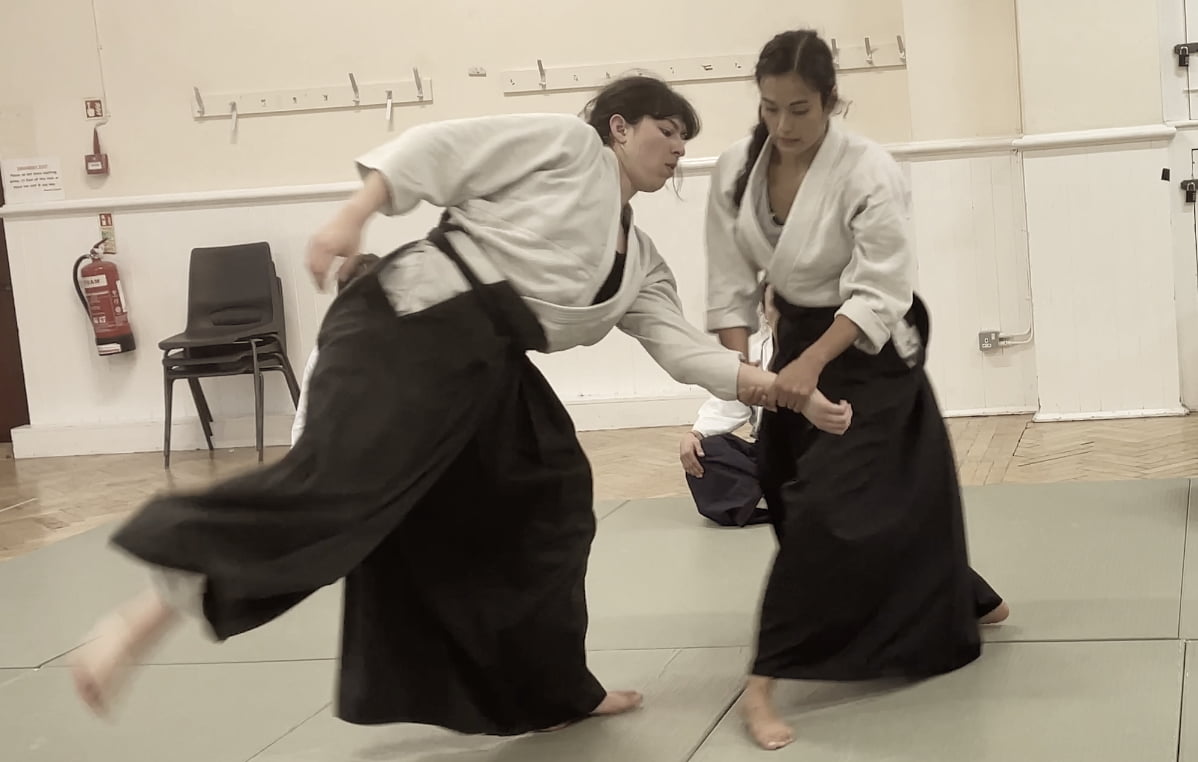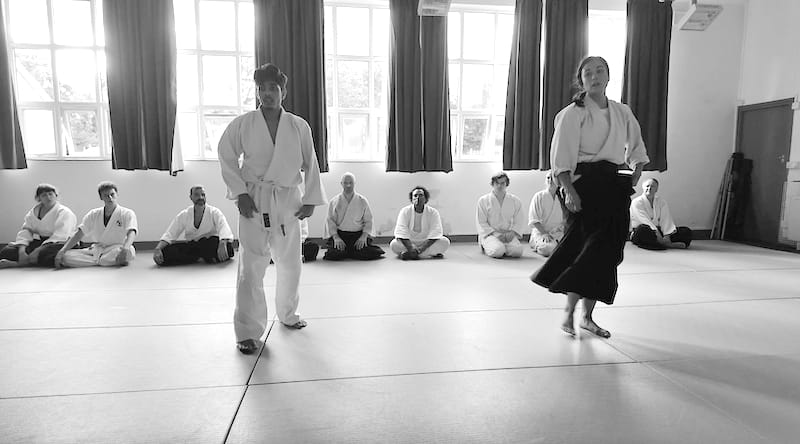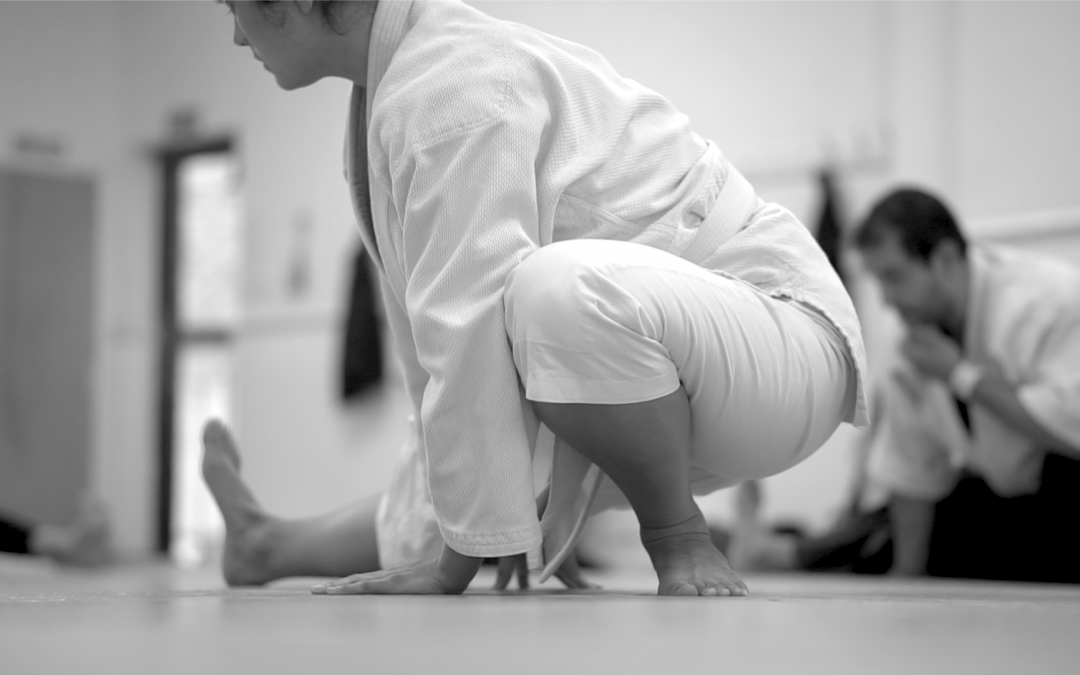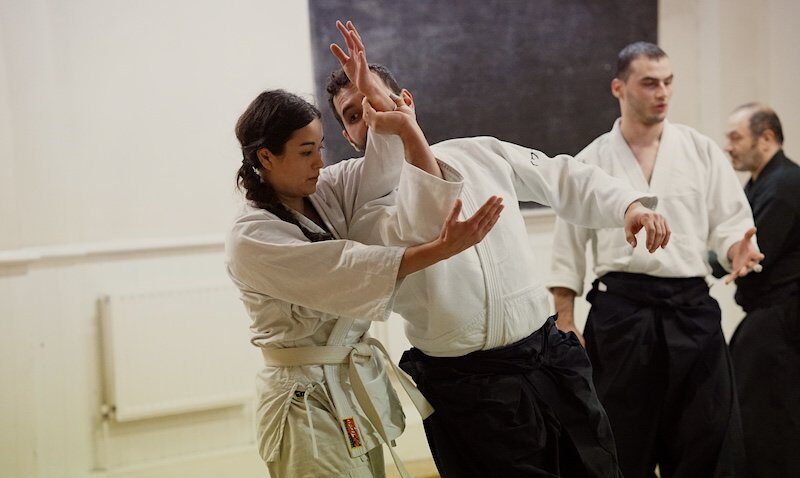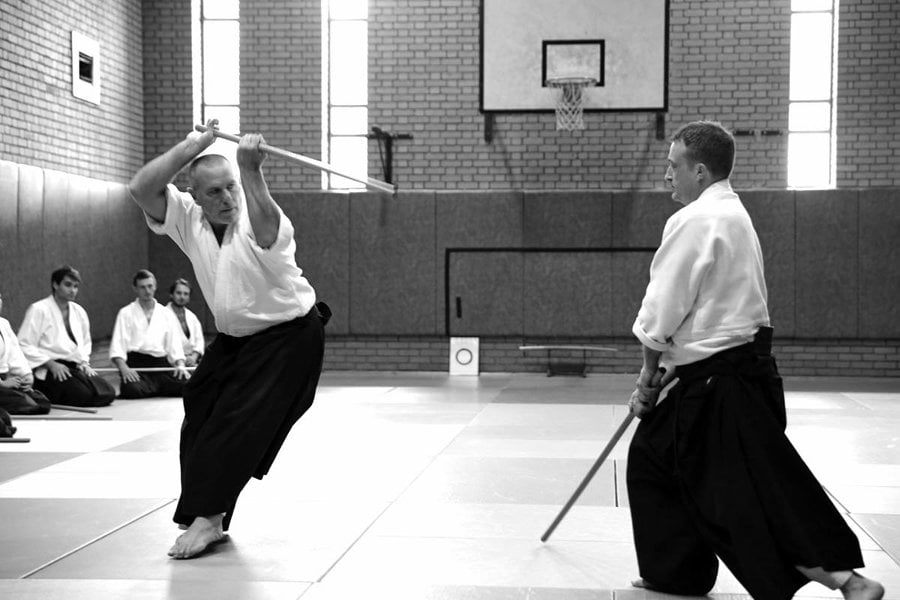When people find out I do a martial art, they often ask why I picked Aikido. I usually say it is because it isn’t competitive, and the uniform looks cool. Jokes aside, the first reason is important to me because I grew up in an environment that was too competitive, centred on success and nothing else. I thought competitive martial arts had the risk of creating similar conditions, so Aikido was particularly attractive to me. I didn’t spend much time trying other martial arts, but I was lucky to find that Aikido provided a space to learn without the pressure of competing in tournaments or having to demonstrate to others that I want to be the best.
Despite feeling that I had found ‘my martial art’, my journey through Aikido has not been uninterrupted. I trained for the first time when I was nineteen, but only for six months because I couldn’t afford it with my student budget. Then, four years later, I had the opportunity to train consistently in a large dojo with an experienced teacher. I was a regular student, and I remember the sensei saying, ‘sometimes, what a dojo needs are not super powerful or athletic people, but good students’. When I heard that, I realised that what drove me to stay in Aikido wasn’t only the non-competition. I was hooked because I could be a student all the time. Every class was an opportunity to learn something new about how my body moves and how I could get other bodies to move in ways that don’t feel forced or acted.
When I decided to move to London, I started looking for dojos; I tried to find information by watching videos on YouTube, asking in Facebook groups and talking to people who had trained in different countries. I was afraid that the few things I had managed to learn in nearly three years of training were not going to help me wherever I started training. And I was partially right. Adjusting to a new city and a new university, making new friends and figuring out how day-to-day things worked took me longer than expected. The new dojo, while exciting, became intimidating every time I thought of all the variables that were changing in my life. So, I decided to prioritise other things and pause my practice for a while.
My break from Aikido lasted much longer than I expected due to some important life changes and, of course, the pandemic. When I decided to begin training again, I was afraid to have become too stiff or forgotten how to move. So I started stretching and working out at home, trying to be in decent condition. Then, I went back, pretending that I didn’t know anything, thinking it would help me adjust to a style that was so different from what I had learned. I tried to be as consistent as possible, but I couldn’t connect with the practice in a way that made me feel like there was a reason for me to be there. And when I had just started to enjoy training and share a bit more with the people in the dojo, I got injured.
I was so sad and angry that I thought that maybe I shouldn’t have returned. After so many interruptions, I felt it didn’t make sense to go back again. However, despite my frustration, I focused on being able to return to the tatami as soon as possible. Different people in the dojo checked in on me often, which helped me concentrate on healing my injury and preparing my body for training. I was lucky to find a good physiotherapist too. Every session, he listened carefully to my explanations about movement in Aikido and adjusted the exercises so I could feel safe in the tatami.
During this involuntary break, I realised that my idea of going back to Aikido pretending to be a tabula rasa was not a good strategy. Moreover, the dojo I had already known for four years still felt like ‘the new dojo’. I realised that my disconnection from the practice wasn’t because of the many hiatuses but rather because I was trying to erase what I already knew so I could replace it with something else. I wasn’t really taking the time to observe and take in what my sensei and other students were showing me.
I went back to the dojo as soon as I was able to start training again. Although I was a little wary of getting injured again, and some techniques still felt a bit scary, I knew I had to be patient and let my body find its place in each technique and trust myself more. This newfound attitude made it easier to open up to training. I still get frustrated when I can’t get a technique to work or when I am too tired or stiff to follow nage’s movements, but I’ve learned to take it as part of the process of being a student.
As a student, there will always be things you won’t understand. Suppose you want to learn something, anything. Whatever it is, you will never be able to control how difficult it is or how long it takes you to feel comfortable doing it. What you can do, though, is to decide what kind of student you want to be. Going back to the dojo was a perfect opportunity for me to work on this. What I have managed to make sense of so far is that being a good student means being open to possibilities. It means using what you already know to adjust to unknown scenarios and being patient enough to understand that sometimes you won’t be able to handle every new thing that comes up. In Aikido, you are lucky that you can repeat and repeat until you don’t get hit.
by Francisca Torres Cortés
